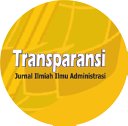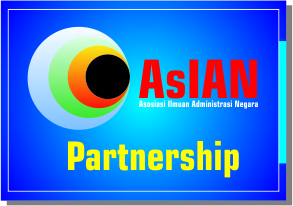Implementasi Peraturan Kepala Kepolisian Negara Republik Indonesia Nomor 16 Tahun 2012 Tentang Mutasi Anggota Kepolisian Negara Republik Indonesia Di Polres Bungo
DOI:
https://doi.org/10.31334/transparansi.v4i2.1849Keywords:
Implementation, Regulation, Mutation, Police, Bungo Police,Abstract
Based on the regulations regarding mutations, this research is based on the limitation of promotion and demotional mutations within the Bungo Police Station, promotional mutations within the Bungo Police Station are still not on target for the purpose of implementing mutations both in terms of personnel and placement of mutations aimed at mutated personnel. and demotional mutations within the Bungo Police are one of the punishments that must be carried out by members of the Bungo Police in accordance with the results of the disciplinary hearing of the professional code of ethics received for violating the professional code of ethics. This study uses a descriptive type of research with a qualitative approach. The population in this study were all members of the Bungo Police. With a sample of 15 people who were taken using purposive sampling technique. The results showed that the implementation of the Regulation of the Head of the National Police of the Republic of Indonesia Number 16 of 2012 concerning Mutations of Police Members at the Bungo Police had been carried out in accordance with the mutation procedures and principles in the Perkap, namely the principles of legality, accountability, justice, transparency, objectivity and anti-corruption. The inhibiting factors for the implementation of the Regulation of the Head of the Indonesian National Police Number 16 of 2012 concerning Mutations of Members of the Indonesian National Police at the Bungo Police are the real number of Bungo Police personnel, which is very far when compared to the number of DSPP (List of Police Personnel Composition) of the Bungo Police which must owned by the Bungo Police and there is still a lack of individual competency development for Bungo Police personnel to attend training or vocational education in order to develop the individual competencies of personnel to be professional in carrying out their duties.References
Buku
Agustino, Leo. 2008. Politik dan Kebijakan Publik. Bandung: AIPI Bandung dan Puslit KP2W Lemlit UNPAD.
Hasibuan, Malayu S. P. 2013. Manajemen Sumber Daya Manusia. Jakarta: PT. Bumi Aksara.
Mulyadi. 2015. Akuntansi Biaya (Edisi5). Yogyakarta: Sekolah Tinggi Ilmu Manajemen YKPN.
Mulyadi, Deddy. 2015. Studi Kebijakan Publik dan Pelayanan Publik: Konsep dan Aplikasi Proses Kebijakan Publik dan Pelayanan Publik. Cetakan Kesatu. Bandung: Alfabeta CV.
Sastrohadiwiryo, Bedjo Siswanto. 2012. Manajemen Tenaga Kerja Indonesia. Jakarta: PT. Bumi Aksara.
Sugiyono. 2014. Metode Penelitian Kuantitatif Kualitatif dan R & D. Bandung: Alfabeta.
Supriyono, R. A. 2018. Akutansi Keperilakuan. Yogyakarta: Gadjah Mada University Press.
Tahir, Arifin. 2014. Kebijakan Publik & Transparansi Penyelenggaraan Pemerintah Daerah. Cetakan Kesatu. Bandung: Alfabeta CV.
Tangkilisan, Hesel Nogi. 2003. Kebijakan Publik yang Membumi: Konsep, Strategi dan Kasus. Yogyakarta: YPAPI.
Waluyo. 2007. Manajemen Publik: (Konsep, Aplikasi dan Implementasi dalam Pelaksanaan Otonomi Daerah). Cetakan I. Bandung: Mandar Maju.
Winarno, Budi. 2002. Kebijakan Publik: Teori dan Proses. Yogyakarta: Media Pressind
Peraturan
Undang-Undang Nomor 02 Tahun 2002 tentang Kepolisian Negara Republik Indonesia
Peraturan Kepala Kepolisian Negara Republik Indonesia Nomor 16 Tahun 2012 tentang Mutasi Anggota Kepolisian Negara Republik Indonesia
Downloads
Published
Issue
Section
License

This work is licensed under a Creative Commons Attribution-ShareAlike 4.0 International License
Please find the rights and licenses in Transparansi : Jurnal Ilmiah Ilmu Administrasi By submitting the article/manuscript of the article, the author(s) agree with this policy. No specific document sign-off is required.
- License
The commercial use of the article will be governed by the Creative Commons Attribution license as currently displayed on Creative Commons Attribution-ShareAlike 4.0 International License.
2. Author(s)' Warranties
The author warrants that the article is original, written by stated author(s), has not been published before, contains no unlawful statements, does not infringe the rights of others, is subject to copyright that is vested exclusively in the author and free of any third party rights, and that any necessary written permissions to quote from other sources have been obtained by the author(s).
3. User Rights
Transparansi : Jurnal Ilmiah Ilmu Administrasi spirit is to disseminate articles published are as free as possible. Under the Creative Commons license, Transparansi : Jurnal Ilmiah Ilmu Administrasi permits users to copy, distribute, display, and perform the work for non-commercial purposes only. Users will also need to attribute authors and Transparansi : Jurnal Ilmiah Ilmu Administrasi on distributing works in the journal and other media of publications.
4. Co-Authorship
If the article was jointly prepared by more than one author, any authors submitting the manuscript warrants that he/she has been authorized by all co-authors to be agreed on this copyright and license notice (agreement) on their behalf, and agrees to inform his/her co-authors of the terms of this policy. Transparansi : Jurnal Ilmiah Ilmu Administrasi will not be held liable for anything that may arise due to the author(s) internal dispute. Transparansi : Jurnal Ilmiah Ilmu Administrasi will only communicate with the corresponding author.
5. Miscellaneous
Transparansi : Jurnal Ilmiah Ilmu Administrasi will publish the article (or have it published) in the journal if the article’s editorial process is successfully completed. Transparansi : Jurnal Ilmiah Ilmu Administrasi editors may modify the article to a style of punctuation, spelling, capitalization, referencing and usage that deems appropriate. The author acknowledges that the article may be published so that it will be publicly accessible and such access will be free of charge for the readers as mentioned in point 3.
Every accepted manuscript should be accompanied by "Copyright Transfer Agreement"prior to the article publication.











